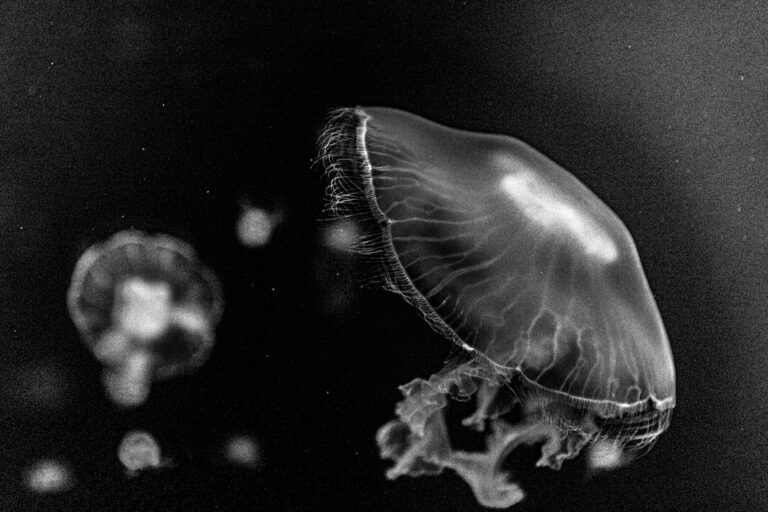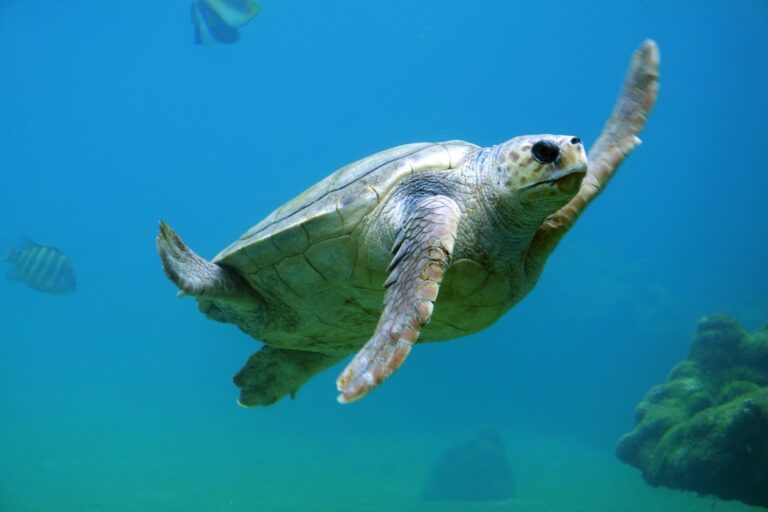Are Turtles Cannibals? Explore the Curious Turtle Diet
Have you ever wondered if turtles are cannibals? As it turns out, the answer is not a straightforward one. While turtles are not typically cannibals, certain circumstances can lead to cannibalistic behaviors among them. In this article, we will explore the intriguing question of whether turtles are cannibals and shed light on their dietary habits that make this behavior possible.
Table of Contents
Key Takeaways:
- Turtles are not typically cannibals, but certain circumstances can lead to cannibalistic behaviors among them.
- Turtles are omnivores and have a varied diet that includes both plant and animal matter.
- Territorial disputes and mating competition can increase the likelihood of cannibalism among turtles.
- Proper tank setup and feeding guidelines can help prevent cannibalistic behaviors among turtles.
- Turtle owners should be aware of signs of aggression and take appropriate measures to reduce the risk of cannibalism.
Understanding Turtle Diets: Omnivores with Varied Palates
When it comes to what turtles eat, they are omnivores, meaning they consume both plant and animal matter. A turtle’s diet can vary depending on their species, habitat, and age. Some of the common foods that turtles eat include:
- Vegetables such as lettuce, carrots, and cucumbers
- Fruits such as apples, bananas, and berries
- Insects such as crickets, mealworms, and waxworms
- Meat such as fish, shrimp, and earthworms
- Commercial turtle food such as pellets and sticks
While turtles have a varied diet, it’s important for owners to provide a balanced and nutritious meal plan to ensure their pet’s overall health. Turtles require a diet that contains the proper ratio of protein, fat, and fiber.
Younger turtles tend to eat more protein-rich foods, while older turtles require a diet that is higher in fiber to aid with digestion. Owners should also ensure that their turtles have access to clean, fresh water at all times.
Turtles’ omnivorous diet and their ability to adapt to different environments have contributed to their success as a species. Whether in the wild or as pets, turtles play an important role in maintaining ecological balance.
Territorial Disputes and Mating Competition: Triggers for Turtle Cannibalism

While turtles are generally peaceful creatures, territorial disputes and mating competition can trigger aggression and potentially lead to cannibalism.
When multiple turtles are kept in the same enclosure, they may compete for resources such as basking spots, food, and mates. This competition can lead to aggressive behaviors, including biting, charging, and chasing.
Male turtles, in particular, may become aggressive during mating season, competing for the attention of females. This can escalate into violent behavior, and in rare cases, cannibalism.
It is important for turtle owners to observe their pets closely and watch for signs of aggression. These may include hissing, biting, or flipping over another turtle. If these behaviors are observed, steps should be taken to separate the turtles and prevent further conflict.
Preventing Cannibalistic Behaviors
To reduce the risk of cannibalism in turtles, it is crucial to provide them with adequate space and resources. Turtles should have access to separate basking spots, hiding places, and food dishes to reduce competition.
If multiple turtles are housed together, it is recommended to provide each turtle with their own designated area to reduce territorial disputes.
Additionally, providing enough food is essential in minimizing aggression and territorial behaviors. Turtles should be fed a balanced diet that meets their nutritional needs and reduces the likelihood of competition.
By understanding the triggers for cannibalistic behaviors and taking proactive steps to prevent them, turtle owners can create a harmonious environment for their pets to thrive.
Preventing Turtle Cannibalism: Tank Setup and Feeding Guidelines
To prevent cannibalism among turtles, proper tank setup and feeding guidelines are essential. Here are some practical tips to ensure your turtles coexist peacefully:
Tank Setup
One of the primary reasons for turtle aggression is a lack of space. To prevent territorial disputes and cannibalism, make sure your turtles have enough room to move around. As a rule of thumb, provide at least 10 gallons of water per inch of turtle length.
If you keep multiple turtles, it’s best to provide separate tanks to minimize competition for space. If you must keep them together, provide ample hiding spots and basking areas to reduce stress and aggression.
Feeding Guidelines
Feeding your turtles adequately is critical for their well-being and can significantly reduce aggression. Turtles require a varied diet that includes both plant and animal matter. Offer a balanced mix of commercial turtle pellets, fresh vegetables, and protein sources such as insects, worms, and small fish.
Make sure your turtles are eating enough, but avoid overfeeding as it can lead to aggression towards tank mates. As a general rule, feed your turtles about as much as they can eat in 10-15 minutes, once a day.
Additional Considerations
Aside from proper tank setup and feeding, there are additional considerations to prevent turtle cannibalism from occurring. Keep an eye out for these signs of aggression:
- Chasing or attacking other turtles
- Biting or nipping at each other’s limbs or tails
- Hogging basking areas or hiding spots
If you notice any of these behaviors, intervene immediately by separating the turtles or providing additional hiding spots and basking areas.
“By providing enough space, food, and attentive care, you can prevent cannibalism and create a peaceful environment for your turtle pets.”
The Importance of Providing Enough Food and Space
Ensuring that your turtles have enough food and space is crucial in preventing cannibalistic behaviors. Turtles require a balanced diet that includes both plant and animal matter. Inadequate nutrition can lead to aggression and even cannibalism.
Feeding your turtles the right amount is also essential. Overfeeding can lead to obesity and aggressive behavior, while underfeeding can cause turtles to become irritable and agitated.
The appropriate tank size and setup are just as important as nutrition. Turtles need enough space to move around, bask, and swim. Lack of space can lead to territorial disputes and aggression.
It is recommended to provide at least 10 gallons of water per turtle, with additional space for basking areas and hiding spots. If you have multiple turtles, a separate tank for each is ideal to prevent territorial disputes and reduce aggression.
| Food Tips | Space Tips |
|---|---|
|
|
By providing enough food and space for your turtles, you can create a stress-free environment that reduces the risk of cannibalistic behaviors. Proper nutrition and tank setup are not only essential for preventing aggression but also for promoting healthy growth and well-being in your pet turtles.
Cannibalism in Turtles: An Uncommon Behavior

Despite their omnivorous diet, cannibalism is not a frequent occurrence among turtles. However, there are rare cases where turtles may exhibit this behavior, especially when it comes to eating their young.
While it may seem shocking and gruesome, there are reasons why this occurs. One of the main factors is the high level of competition among hatchlings for food and resources. In some cases, the larger and stronger hatchlings may resort to attacking and eating their weaker siblings, a phenomenon known as fratricide.
Interestingly, female turtles may also eat their own eggs in certain circumstances. For example, if the environmental conditions are unfavorable for the eggs to hatch, the female turtle may consume them to regain the energy that was expended during the egg-laying process.
It is essential to provide proper care and attention to hatchlings to prevent cannibalistic behavior. This includes providing enough space and food, separating them into smaller groups if necessary, and monitoring their behavior closely. Additionally, removing eggs as soon as possible after they are laid can reduce the likelihood of female turtles eating them.
Cannibalism in the Wild vs. in Captivity
Are turtles more prone to cannibalism in the wild or in captivity? The occurrence of cannibalism among turtles is generally higher in captivity than in the wild. While cannibalism can occur in the natural habitat of turtles, it is usually limited to certain situations, such as when food is scarce or when females are laying eggs.
In captivity, however, turtles are often kept in close proximity to one another, which can lead to territorial disputes and aggression. Additionally, they may be fed a diet that does not provide the necessary nutrients, causing them to resort to cannibalism.
A study conducted by the University of Illinois found that the incidence of turtle cannibalism was significantly higher in captivity than in the wild. The study highlighted the importance of providing adequate space and nutrition to minimize aggressive behaviors among turtles.
The table above provides a comparison between the frequency of turtle cannibalism in the wild versus in captivity. The data shows that cannibalism is more common in captive environments, with over 50% of observed cases occurring in captivity. This further emphasizes the importance of proper care and attention when keeping turtles as pets.
“While cannibalism can occur naturally among animals, the incidence of cannibalism is significantly higher in captivity than in the wild. This highlights the importance of understanding the dietary and social needs of turtles in captivity to prevent aggression and improve their overall well-being.”
Signs of Aggression and Intervention Measures
As a turtle owner, it is essential to be aware of the signs of aggression in your pets to reduce the risk of cannibalism. Some of the common signs include:
- Flipping over other turtles
- Biting or nipping at other turtles
- Chasing or stalking
- Hissing or lunging
- Turtle shells that look damaged or broken
If you notice any of these behaviors, it is important to intervene immediately to prevent any potential harm to your turtles. You can try the following intervention measures:
- Separate the turtles: If any of the turtles show signs of aggression, immediately separate them from each other and keep them in separate tanks.
- Provide enough space: Make sure each tank has enough space for the turtles to move around and have their own territory.
- Feed separately: Feed each turtle separately to avoid any competition or aggression over food.
- Add hiding spots: Providing hiding spots in each tank can help reduce stress and aggression among turtles.
- Monitor closely: Keep a close eye on your turtles’ behavior and interactions, especially when they are together.
Tip: If you have multiple turtles, it is important to observe their behavior before introducing them to each other. It is much easier to prevent aggression from developing than to stop it once it has started.
Conclusion
In conclusion, it’s clear that turtles are not typically cannibals, but certain circumstances can cause them to exhibit such behavior. By understanding the factors that contribute to cannibalism among turtles, owners can take appropriate measures to prevent it and create a safe and healthy environment for their pets.
One of the key ways to prevent turtle cannibalism is by providing adequate space and food. Turtles that are forced to compete for resources are more likely to exhibit aggressive behavior, which can lead to cannibalism. By ensuring that each turtle has enough space and food to thrive, owners can reduce the risk of cannibalism.
Additionally, it’s important to be aware of the signs of aggression among turtles and to intervene when necessary. Signs of aggression can include biting, chasing, and hissing. When these behaviors are observed, it’s important to separate the turtles and provide them with their own space to prevent further aggression and potential cannibalism.
In the end, preventing turtle cannibalism comes down to responsible pet ownership. By providing a suitable environment and closely monitoring your turtles’ behavior, you can reduce the risk of cannibalism and create a safe and peaceful home for your pets.
FAQ
Are turtles cannibals?
Turtles are not typically cannibals, but certain circumstances can lead to cannibalistic behaviors among them.
What do turtles eat?
Turtles have a varied diet that includes both plant and animal matter, as they are omnivores.
Why do turtles exhibit cannibalistic behaviors?
Cannibalism among turtles can occur due to factors such as territorial disputes and mating competition.
How can turtle cannibalism be prevented?
Preventive measures include providing proper tank setup, enough food and space for turtles, and monitoring signs of aggression.
Do turtles eat their own young?
While rare, there are instances where turtles may eat their own hatchlings. Preventive measures can be taken to protect the hatchlings.
Is cannibalism more common in wild turtles or captive turtles?
The occurrence of cannibalism may vary between wild turtles and those kept as pets. Various factors play a role in influencing this behavior.
What are the signs of aggression in turtles?
Signs of aggression include biting, snapping, chasing, and aggressive posturing. Close monitoring and appropriate intervention can reduce the risk.
Are there any specific measures to reduce the risk of turtle cannibalism?
Providing adequate space, food, and separate tanks for territorial disputes can help reduce the risk of cannibalistic behaviors.
Can turtle cannibalism be completely eliminated?
While cannibalism cannot be completely eliminated, implementing preventive measures can significantly reduce the likelihood of its occurrence.
Overall, what should turtle owners keep in mind regarding cannibalism?
Turtle owners should be attentive to their pets’ dietary needs, provide suitable environments, and take appropriate action when signs of aggression or cannibalism are observed.







